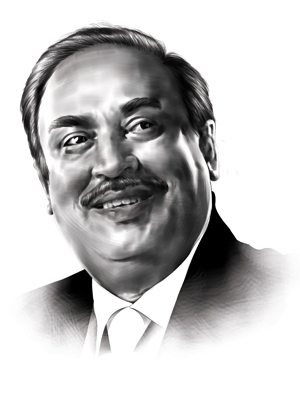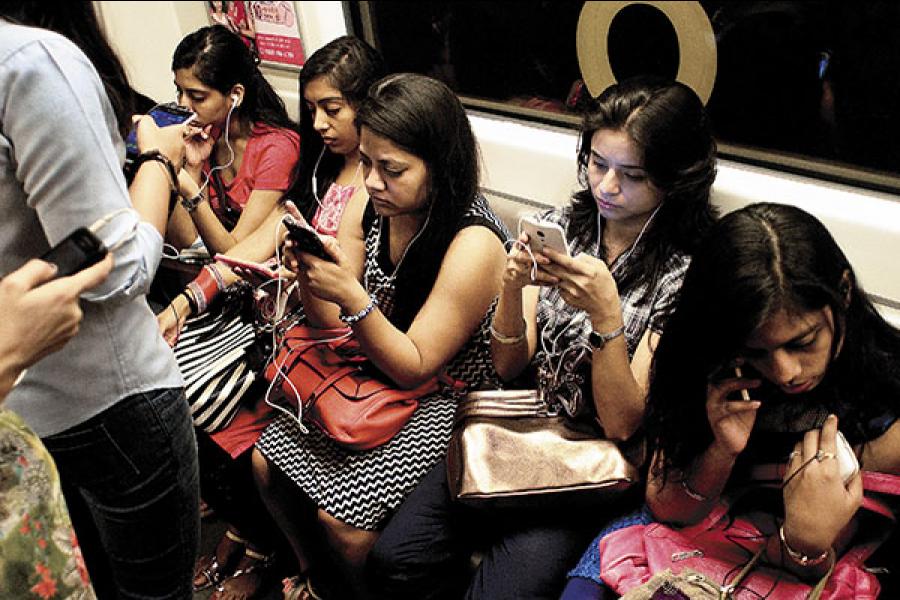
Mobile connectivity to ensure inclusive growth: Sunil Sood
Telecom will build key infrastructure for PM's vision of a Digital India and adequacy of spectrum will be crucial to its success
Malcolm Gladwell, the author of The Outliers and other books that document many things we overlook, said it best: The visionary starts with a clean sheet of paper, and reimagines the world.
The framework of the vision articulated by Prime Minister Narendra Modi—Digital India, Make in India, Skill India, Smart Cities and financial inclusion—has the potential to transform our country in entirety and make India the next global superpower, a position that it is ideally poised for and richly deserves.
The perception of brand India is clearly on the rise and moving forward. Three important factors will need to be managed well to retain this upswing: Quality of governance, political leadership, and focus on critical levers of the economy.
Watch the Signals, Don’t Listen to the Noise
Amid a world continuing its struggle for growth (recent estimates put global economic growth at 2.4 percent for 2015), India appears to be the only bright spot, growing at 7.5 percent, amongst the fastest in the world. It is expected to hold that position for the next few years, supported by strong domestic demand and low inflation.
In 2015, India was the most favoured destination for foreign direct investment (FDI): We received $31 billion in FDI in the first half of the year, better than China’s $28 billion, and $27 billion for the US, according to a Financial Times report at the end of September. Compare that to $12 billion that India received in the first half of 2014. It also moved up on the World Bank’s Doing Business rankings by 12 spots, a clear indication that there is a change in the policy environment.
In early November, the government eased restrictions on FDI in 15 sectors, including defence and civil aviation. In defence, foreign investment can go up to 49 percent under the automatic route; better yet, the approval for this level of investment now vests with the FIPB (Foreign Investment Promotion Board), instead of the Cabinet Committee on Security.
Take construction, a sector where activity has been severely impaired. There will be no entry and exit barriers or area restrictions while minimum capitalisation of $5 million within six months of commencement has been done away with. Foreign investors can repatriate investment before project completion, subject to a lock-in period of three years.
Sourcing norms have been relaxed for retailers. In banking, the separate limits for FDI and FII investment has been made fungible with combined limit set at 74 percent.
On the larger macro issue of tax policy, the government has put its entire weight behind the Goods and Services Tax (GST); the PM has reached out personally to the Opposition to ensure its passage in the Rajya Sabha. There may be a few hiccups, but the GST’s passage will happen, sooner than later. When it does, it will be the gamechanger that has been promised.
The key message seems to be this: We will ease, simplify and rationalise processes that get in the way. As the PM said in a series of tweets, ‘government wants the world to see the tremendous opportunities that India offers’.
Make the Right Calls
In telecommunications, a critical pillar of infrastructure and the key to realising the vision of Digital India is spectrum—its quantum, price, and a clear roadmap for long term availability is the core issue.
Today, India has the lowest per capita spectrum in the world. This places a huge premium on the limited quantum of spectrum available, making it the most expensive in the world. In a country that is amongst the largest and the fastest growing consumer of data, where mobile is the most popular means of accessing the internet, the tariffs are the lowest in the world and one which aspires for all its citizens to be digitally connected, we need to discuss this.
Rather than consider it a cash cow, I think it is time to view spectrum as the critical enabler for last mile outreach, fostering inclusion and delivering a variety of services to people.
With over a billion mobile phone subscriptions across the country, the ubiquitous reach of the mobile phone makes it the most relevant channel for this. Accordingly, the industry needs a much larger quantity of quality and affordable spectrum.
Telecom infrastructure is the other big issue. The sector requires significant volume of investments to be made consistently with a long gestation period of several years. The advances in technology and evolving consumer demands ensure that thousands of crores need to be spent towards capital expenditure each year to expand and upgrade networks.
For too long, the telecom sector has been the target to fund deficits at various levels of government—central, state as well as local administrative bodies. The huge debt that many companies in the telecom sector are weighed down by (more than Rs 3 lakh crore at last count and growing) has made it difficult for some of them to continue to make requisite investments for the future. The onus is also on the government to ensure that the telecom industry remains financially strong and sustainable to invest the estimated Rs 500,000 crore required over the next five to six years for spectrum, technology, equipment and fibre backbone.
A regulated sector, telecom also needs a framework that is progressive, visionary and balances the interests of the consumer and industry. It is important that policies cater to the larger objective of nation building and take the entire sector forward rather than address concerns of segments selectively.
Making government buildings available to set up cell sites is a positive step, but not enough. What perhaps complicates matters is that local administrations, which approve right of way for fibre optic cables to be laid and making cell sites available, see this as their own revenue making opportunity and use rules different from those approved by the Department of Telecommunications.
The key question to answer is that do we wish to traverse the digital world of the 21st century on a single lane broadband highway or a multi-lane broadband expressway? In my opinion, the vision that the PM has shown demands that broadband be treated as core infrastructure for it is the foundation that drives innovation and accelerates adoption of new models of engagement between businesses, consumers and government.
Given the complexities of the telecom industry, the multiple jurisdictions, its importance in connecting a large country with 16 percent of the world’s population and critical role in nation building, another important question needs to be addressed: Should telecom services be treated as an essential service like power? Is that something we could well see in 2016?
The Outlook
A good beginning has been made by allowing spectrum to be traded and shared—this makes spectrum available without having to wait for an auction. Companies can make better business decisions about where they want to put their investments, in technology and services. Second, the congestion in certain geographical pockets may lessen, improve overall service and make customers happy.
With spectrum sharing and trading, the possibility of consolidation always exists. India need not be different from other countries; you could well envisage a scenario where there are three or four major players in the entire industry. The next round of spectrum auctions will indicate whether we are headed in that direction, depending on how many participate.
The focus on Jan-dhan, Aadhaar and Mobile (JAM) rightly places the mobile both as a tool as well as the means to achieve the desired goal of economic prosperity, well-being and social empowerment. Empowering citizens with technologies to create more transparency in every sphere is key to inclusive growth. The little device in the pocket or purse becomes their window to a world of information, education, livelihood, employment and even shopping and entertainment.
Today, we are partnering with the government in several projects and pilots designed to leverage the last mile reach of mobile technology to address urgent national problems in education, health, inclusion, governance, equality and access. They find our global experience, local understanding and reach useful. Going forward, we strongly believe that we may be among the best partners for accelerating the Digital India initiative.
Mobile technology continues to drive innovations across industries creating new business and consumer connect models. Mobile applications, IVR, USSD, mobile banking, cloud computing and machine-to-machine technologies are connecting every possible thing on the planet.
The rise of m-commerce is an outstanding example of changing customer needs, like the balance between voice and data usage. As their needs evolve, customers need to be educated too. M-commerce is also a bouquet of new business opportunities for the telecom industry as service providers connect the consumers with the offerings.
The onset of next generation technologies will further transform the way of life with greater intensity. Customers, sharpened with their experience of using the mobile for both voice and data and equipped with a better understanding of their needs, will demand seamless connectivity at home, at work, at play and anywhere in between.
To the consumer, it will not be the technology but the overall experience that the service provider offers that will matter.
With India being a congregation of several mini Indias, each with its own and varying needs for connectivity, the telecom service provider will need to meet this expectation by integrating multiple technologies into a single meshed network offering the best, uninterrupted experience.
I believe that a portfolio of technologies—2G, 3G and 4G—each put to optimum use will be best suited to service the myriad connectivity needs of consumers. Look forward to the exciting times ahead.
(This story appears in the 22 January, 2016 issue of Forbes India. To visit our Archives, click here.)
















